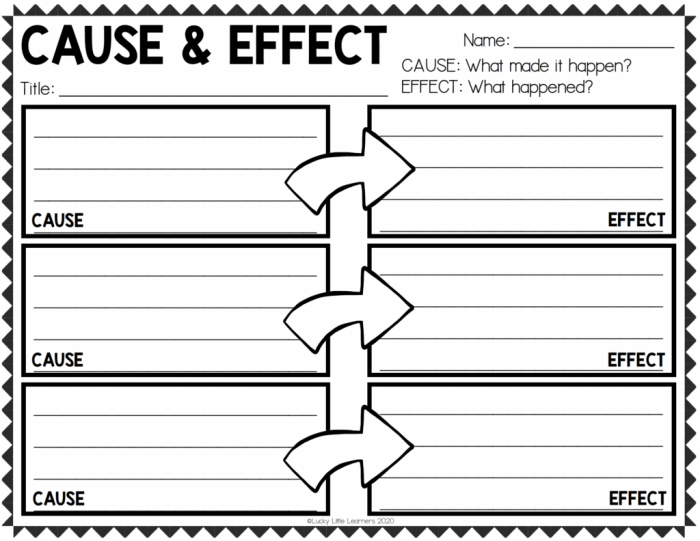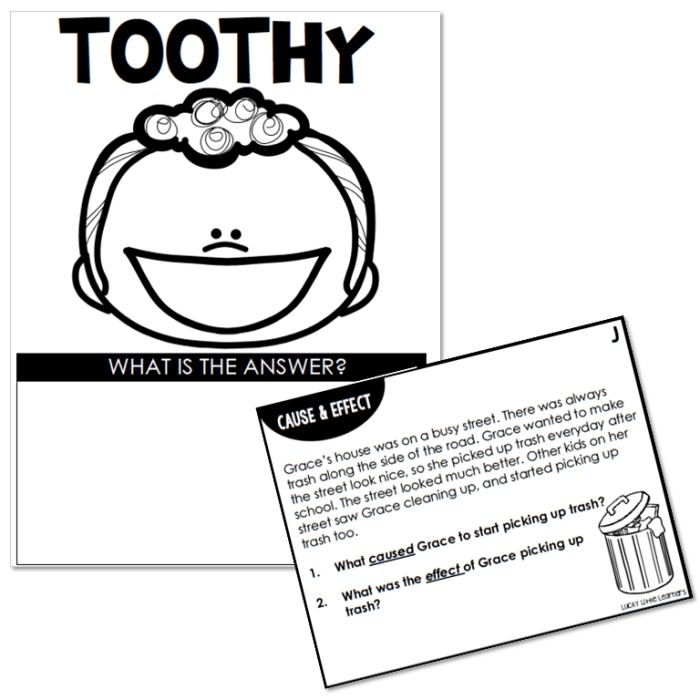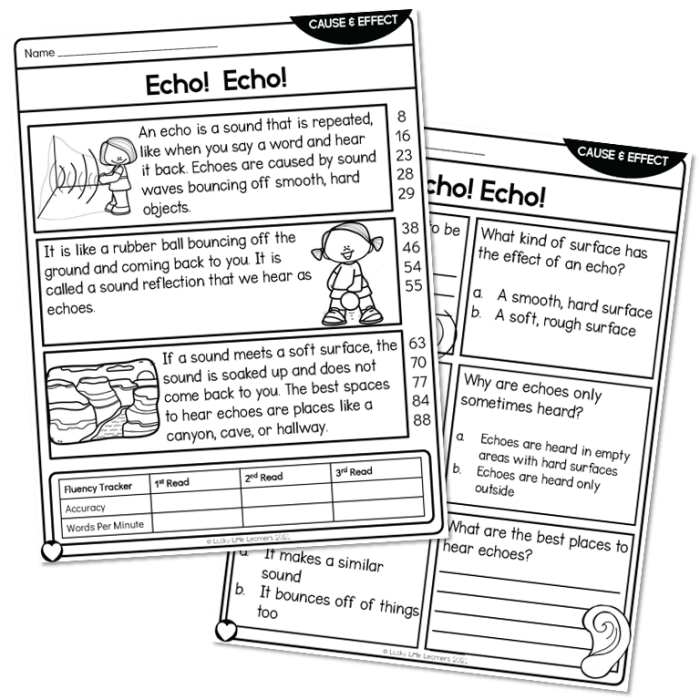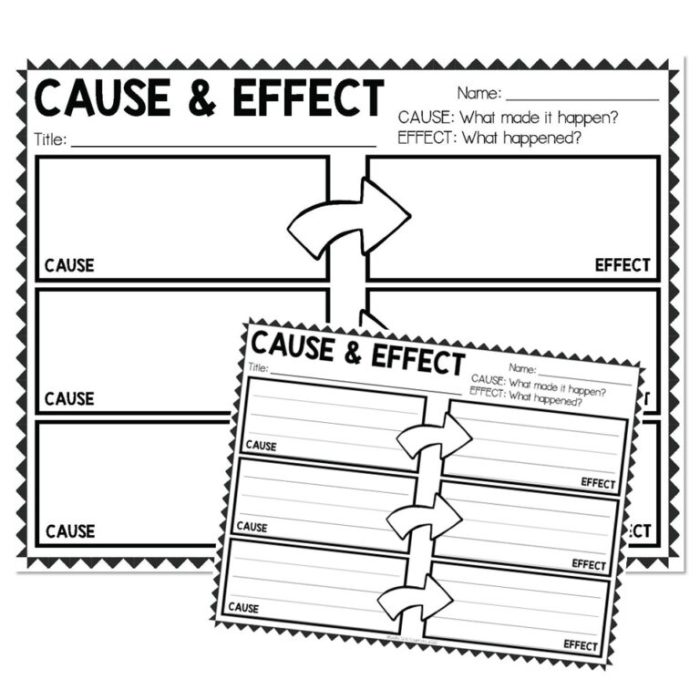Cause and effect nonfiction passages play a crucial role in understanding the complexities of the world around us. By exploring the relationships between events and their consequences, these passages provide valuable insights into historical events, scientific phenomena, and social issues.
This comprehensive guide will delve into the intricacies of cause and effect nonfiction passages, equipping you with the tools to identify, analyze, and write about these relationships effectively.
Introduction to Cause and Effect Nonfiction Passages

In nonfiction writing, understanding cause and effect relationships is crucial for comprehending the world around us. A cause-and-effect relationship is a connection between two or more events or phenomena, where one event (the cause) leads to another event (the effect).
Understanding cause and effect is essential for analyzing nonfiction texts because it allows readers to identify the reasons behind events, predict outcomes, and make informed decisions. By examining cause-and-effect relationships, we can gain insights into complex issues and develop a deeper understanding of the world.
Examples of Cause and Effect Nonfiction Passages
Cause and effect nonfiction passages can be found in various forms, including:
- Historical accounts that explore the causes and consequences of major events.
- Scientific reports that investigate the relationship between variables and outcomes.
- Economic analyses that examine the impact of government policies on economic growth.
- Social studies texts that explore the causes and effects of social phenomena, such as crime or poverty.
Identifying Causes and Effects

Identifying causes and effects is a critical skill for understanding nonfiction passages. By recognizing the relationships between events, readers can gain a deeper understanding of the text and the world around them.
To identify causes and effects, follow these steps:
- Read the passage carefully.Pay attention to the sequence of events and the language used to describe them.
- Identify key events.Look for events that are significant and have a clear impact on other events.
- Determine the relationship between events.Ask yourself if one event led to another or if they occurred independently.
- Classify the relationships.Once you have determined the relationship between events, classify them as either cause-and-effect or correlation.
Table of Cause-Effect Relationships
| Cause | Effect |
|---|---|
| The sun rises. | It becomes daylight. |
| A seed is planted. | A plant grows. |
| A person eats a sugary snack. | Their blood sugar level rises. |
Types of Causes and Effects
There are different types of causes and effects. Causes can be:
- Direct:A direct cause is an event that immediately leads to another event.
- Indirect:An indirect cause is an event that leads to another event through a series of intermediate steps.
Effects can be:
- Immediate:An immediate effect is an event that occurs immediately after a cause.
- Delayed:A delayed effect is an event that occurs some time after a cause.
Analyzing Cause and Effect Relationships

Understanding the relationships between causes and effects is crucial for comprehending nonfiction passages. By analyzing these relationships, readers can identify the factors that contribute to events and outcomes.
Methods for Analyzing Cause and Effect Relationships
- Identifying the Main Cause:This involves pinpointing the primary factor that leads to the effect.
- Identifying Contributing Factors:These are secondary factors that play a role in causing the effect.
- Determining the Sequence of Events:Establishing the chronological order of events helps clarify the cause-and-effect relationship.
- Examining Cause and Effect Chains:Analyzing the interconnected series of causes and effects provides a comprehensive understanding of the relationship.
Importance of Considering Multiple Perspectives, Cause and effect nonfiction passages
When analyzing cause and effect relationships, it is essential to consider different perspectives. By examining the issue from various viewpoints, readers can gain a more nuanced understanding of the factors involved.
Writing About Cause and Effect Relationships

When writing about cause and effect relationships, it is important to understand the different types of writing assignments that may require students to write about cause and effect relationships. These types of assignments can include essays, research papers, and reports.
Each type of assignment will have its own specific requirements, so it is important to read the assignment carefully before beginning to write.
Tips for Writing Clear and Concise Cause and Effect Essays
When writing a cause and effect essay, it is important to be clear and concise. The following tips can help you write a well-written cause and effect essay:
- Start with a strong thesis statement.Your thesis statement should clearly state the cause and effect relationship that you will be discussing in your essay.
- Provide evidence to support your thesis statement.The evidence you provide should be relevant and credible. It should also be specific and detailed.
- Organize your essay logically.Your essay should be organized in a logical way that makes it easy for the reader to follow your argument.
- Use clear and concise language.Your writing should be clear and concise. Avoid using jargon or technical terms that your reader may not understand.
- Proofread your essay carefully.Before you submit your essay, proofread it carefully for errors in grammar, spelling, and punctuation.
Question & Answer Hub: Cause And Effect Nonfiction Passages
What are the key elements of a cause and effect relationship?
A cause and effect relationship consists of two main elements: the cause, which is the event or factor that brings about a change, and the effect, which is the result or consequence of that change.
How can I identify cause and effect relationships in a nonfiction passage?
To identify cause and effect relationships, look for signal words such as “because,” “therefore,” “as a result,” and “consequently.” You can also analyze the sequence of events and determine which event led to the subsequent event.
What are the different types of cause and effect relationships?
There are two main types of cause and effect relationships: direct and indirect. A direct cause-effect relationship occurs when one event directly leads to another event. An indirect cause-effect relationship occurs when a series of events or factors contribute to the final effect.
